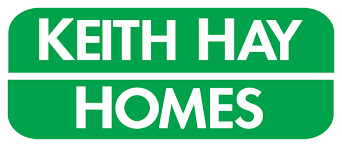Whenever I talk or write about property, it’s typically unavoidable that I need to use averages or medians or other types of summary measures – these are often at the national level or by territorial authority (e.g. Auckland, Napier, Christchurch etc.). However, we can also drill down to the suburb level very easily, and this month I wanted to take a look at this more detailed split for Auckland.
Auckland Central is the biggest suburb, with around 21,000 dwellings – reflecting the large stock of apartments. Next is Remuera, with more than 9,700 dwellings, ahead of Papatoetoe (~9,400) and Henderson (~9,000). Of course, with a median property value of around $2.7m and a gross rental yield of 1.6%, there wouldn’t be that many property investors who would naturally think of Remuera as the first or easy choice for their next purchase.
So, where are the more obvious targets? In terms of the simple level of values, only a small handful of suburbs sit below $800,000 – these include Auckland Central, Grafton, Manukau, and Manurewa East. There are another ten or so suburbs in the range of $800-$900,000, including Otara, Otahuhu, Newmarket, and Papatoetoe.
Of course, the gross rental yield is more insightful than the simple level of values itself, and on our data, some suburbs around Auckland still have a ‘decent’ figure of say 3.5% or more. These include 4% in Grafton and Manukau, 3.9% in Manurewa East, 3.6% in Auckland Central, and 3.5% for Otara. It’s also worth noting that Grafton, Otara, and Manurewa East have all seen rents themselves rise by 7-8% over the past 12 months, although Manukau and Auckland Central have been less encouraging, with rents actually falling over the past year.
Measures of activity can also be of great interest to investors, and when you look at sales over the year as a share of total dwellings, some parts of Auckland have still been quite active – e.g. in Manurewa East, more than 10% of the housing stock has turned over in the past 12 months, with a similar figure in Papakura and Takanini. Liquidity and the actual availability of listings are, of course, vital for anybody looking to buy. By contrast, there’s been relatively less action in Otara and Newmarket (turnover of 3.5%) and Grafton (2.4%).
At face value, then, there still seem to be opportunities in various parts of Auckland, even when the wider market is amid a downturn. Of course, the hurdles of a 40% deposit, higher mortgage rates, and the (apparent) reduced availability of higher debt-to-income ratio loans remain challenges.
All that said, to the extent that Auckland’s downturn has come through faster than many other parts of the country (apart from Wellington), there may also be a case for thinking that the floor for values could arrive sooner too. Yes, there are still challenges (as noted above), but we’re also seeing some green shoots of life too – most importantly, unemployment remains very low, and nobody is firmly predicting this to change anytime soon either. My hunch is that households have worked through the initial shock and are starting to adjust to the ‘new norm’ for their finances too.
Ultimately, we can never be sure how much further property values might fall or when the downturn will end, whether at an all-Auckland level or by suburb. But experienced investors also know that ‘picking the bottom’ is very difficult to achieve and it could be that savvy buyers will start to return to the market soon, if not already – provided that they can get the finance, of course. Given that banks remain cautious, this could be the key lingering challenge into 2023.

Kelvin Davidson
Kelvin Davidson is the Chief Economist of CoreLogic New Zealand.















Add Comment